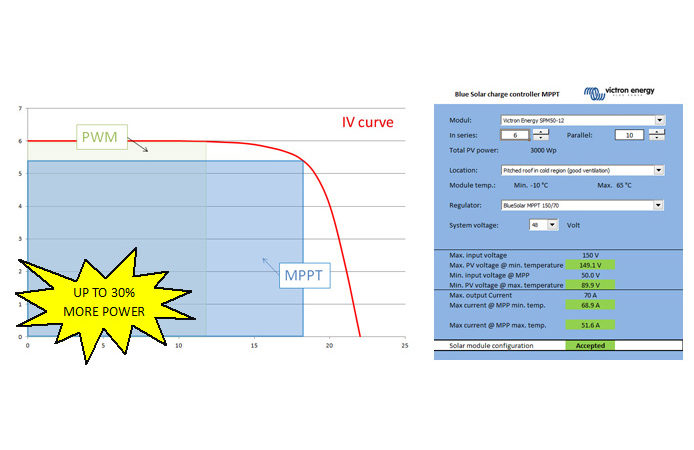I'm trying to choose the correct battery size for an offgrid setup.
It seems the batteries will likely be the first to need replacing.
I've come across a lot of options for keeping a battery healthily charged.
Though I had some questions about the pros and cons of when to do this.
-Overpanel your charge controller to increase the time you have ideal charge rates on the battery.
Can be done as long as the panel array Voc and Ioc does not exceed that of the charge controller.
However you lose potential power from solar panels.
Will the excess current limited by the CC cause any serious damage from heat?
Coupled with longer sun hours(=longer excess current) and higher air temperatures, I'm most concerned about this during
summertime.
Are there any other concerns about overpaneling to CC?
-Properly sized panel wattage to battery.
If someone is using an oversized controller to panels (for future expansion), I can see there being issues with
undercharging and/or overcharging if battery is sized improperly.
-
MPPT output current=Panel Wattage/Battery Voltage
Is using the panels peak output accurate for sizing batteries?
What type of voltage should be used to size the batteries (nominal, float, speed charge, or something else)?
I've seen both nominal and float used, however if speed charging batteries is recommended, wouldn't that voltage be used?
-Equalize batteries periodically
If speed charge or maximum smoke is used, will the need to equalize batteries be as often?
If batteries are kept above 80%, will fewer equalizations be required?
-Charge the battery at C/10
What situations would call for sizing the battery to be charged at a higher charge rate than C/10?
Or when can hitting the Absorb phase earlier be good for the battery?
It seems the batteries will likely be the first to need replacing.
I've come across a lot of options for keeping a battery healthily charged.
Though I had some questions about the pros and cons of when to do this.
-Overpanel your charge controller to increase the time you have ideal charge rates on the battery.
Can be done as long as the panel array Voc and Ioc does not exceed that of the charge controller.
However you lose potential power from solar panels.
Will the excess current limited by the CC cause any serious damage from heat?
Coupled with longer sun hours(=longer excess current) and higher air temperatures, I'm most concerned about this during
summertime.
Are there any other concerns about overpaneling to CC?
-Properly sized panel wattage to battery.
If someone is using an oversized controller to panels (for future expansion), I can see there being issues with
undercharging and/or overcharging if battery is sized improperly.
-
MPPT output current=Panel Wattage/Battery Voltage
Is using the panels peak output accurate for sizing batteries?
What type of voltage should be used to size the batteries (nominal, float, speed charge, or something else)?
I've seen both nominal and float used, however if speed charging batteries is recommended, wouldn't that voltage be used?
-Equalize batteries periodically
If speed charge or maximum smoke is used, will the need to equalize batteries be as often?
If batteries are kept above 80%, will fewer equalizations be required?
-Charge the battery at C/10
What situations would call for sizing the battery to be charged at a higher charge rate than C/10?
Or when can hitting the Absorb phase earlier be good for the battery?

Comment